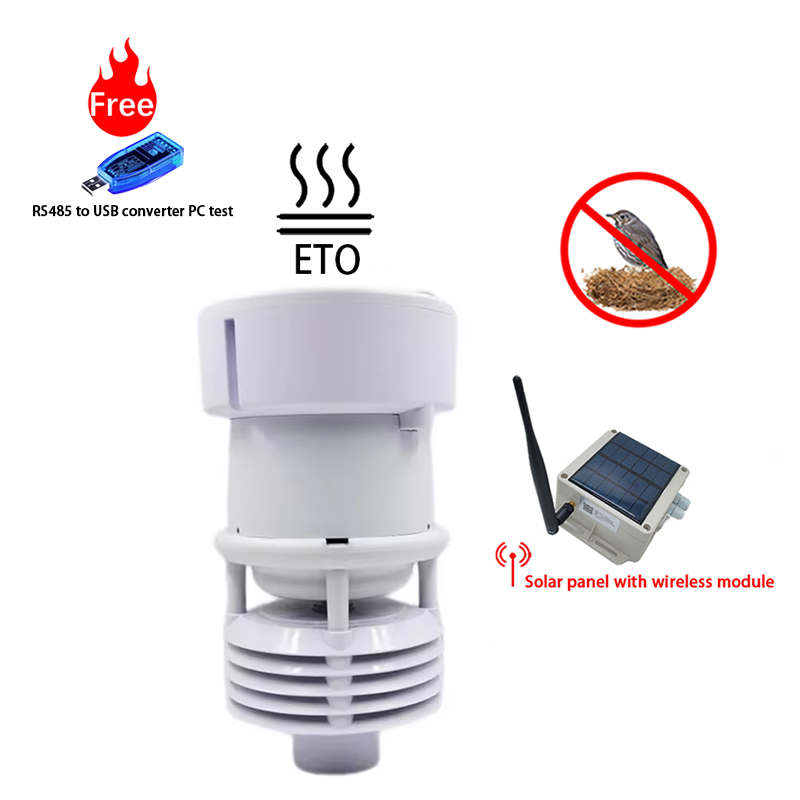Farmers are on the lookout for localized weather data. Weather stations, from simple thermometers and rain gauges to complex internet-connected instruments, have long served as tools for gathering data on the current environment.
Large-scale networking
Farmers in north-central Indiana can benefit from a network of over 135 weather stations that provide weather, soil moisture and soil temperature conditions every 15 minutes.
Daily was the first Innovation Network Ag Alliance member to have a weather station installed. He later added a second weather station about 5 miles away to provide more insight into his nearby fields.
“There are a couple weather stations that we watch in the region, within a 20-mile radius,” Daily adds. “Just so we can see rainfall totals, and where rainfall patterns are at.”
Real-time weather station conditions can easily be shared with everyone involved in field work. Examples include monitoring local wind speed and direction when spraying and keeping track of soil moisture and temperature throughout the season.
Variety of data
internet-connected weather stations measure: wind speed, direction, rainfall, solar radiation, temperature, humidity, dew point, barometric conditions, soil temperature.
Since Wi-Fi coverage isn’t available in most outdoor settings, current weather station upload data via 4G cellular connections. However, LORAWAN technology is starting to connect stations to the internet. LORAWAN communication technology operates for cheaper than cellular. It has the characteristics of low speed and low power consumption data transmission.
Accessible through website, weather station data helps not only growers, but also teachers, students and community members better understand weather impacts.
Weather station networks aid in monitoring soil moisture at different depths and adjusting volunteer watering schedules for newly planted trees in the community.
“Where there’s trees, there’s rain,” Rose says, explaining that transpiration from trees helps create the rain cycle. Tree Lafayette recently planted over 4,500 trees in the Lafayette, Ind., area. Rose has used six weather stations, along with other weather data from stations located throughout Tippecanoe County, to help ensure newly planted trees get enough water.
Assessing value of data
Severe weather expert Robin Tanamachi is an associate professor in the Department of Earth, Atmospheric and Planetary Sciences at Purdue. She uses stations in two courses: Atmospheric Observations and Measurement, and Radar Meteorology.
Her students regularly assess the quality of weather station data, comparing it to more costly and more frequently calibrated scientific weather stations, such as those located at Purdue University Airport and on the Purdue Mesonet.
“For a 15-minute interval, rainfall was off by about a tenth of a millimeter — which doesn’t sound like much, but over the course of a year, that can add up to quite a bit,” Tanamachi says. “Some days were worse; some days were better.”
Tanamachi has combined weather station data alongside data generated from her 50-kilometer radar located at Purdue’s West Lafayette campus to help better understand rainfall patterns. “Having a very dense network of rain gauges and being able to then validate radar-based estimates is valuable,” she says.
If soil moisture or soil temperature measurements are included, a location that accurately represents characteristics such as drainage, elevation and soil composition is critical. A weather station located on a flat, level area, away from paved surfaces, provides the most accurate readings.
Also, locate stations where collision with farm machinery is unlikely. Stay away from large structures and tree lines to provide accurate wind and solar radiation readings.
Most weather stations can be installed in a matter of hours. Data generated over its lifetime will aid in both real-time and long-term decision-making.
Post time: May-27-2024


